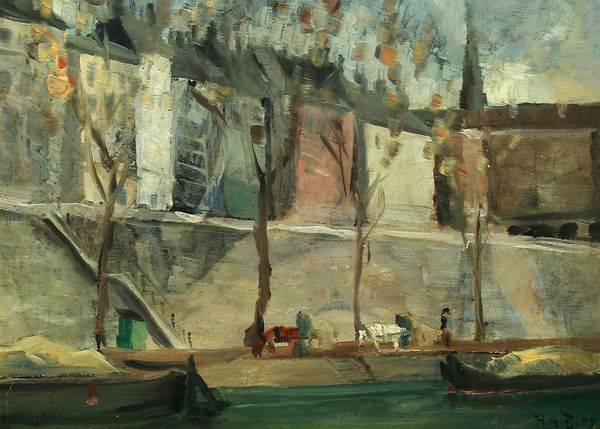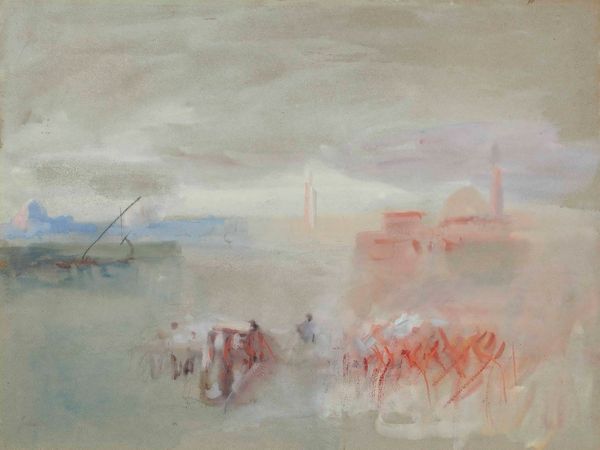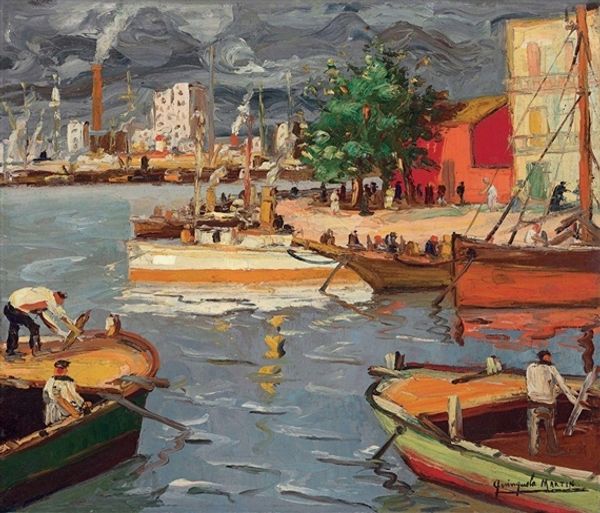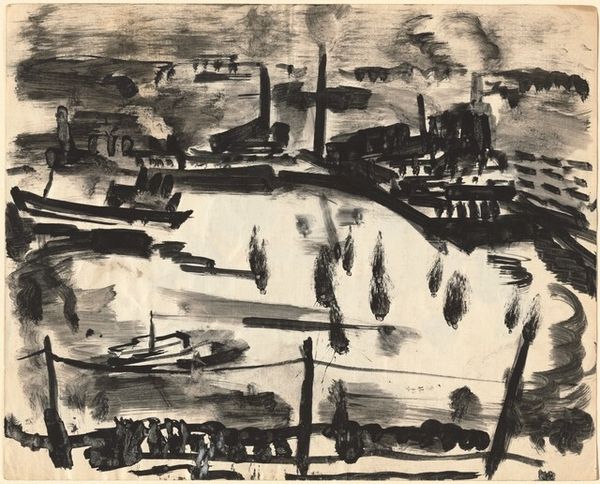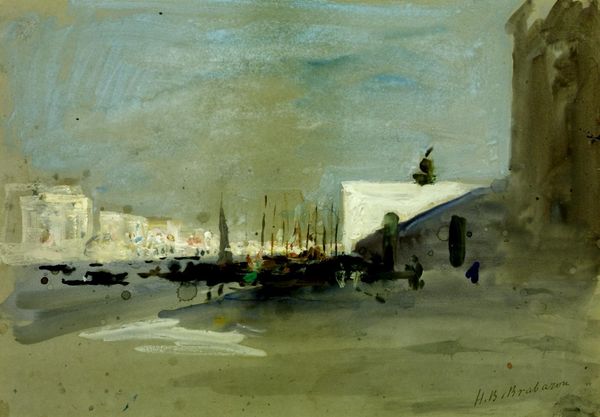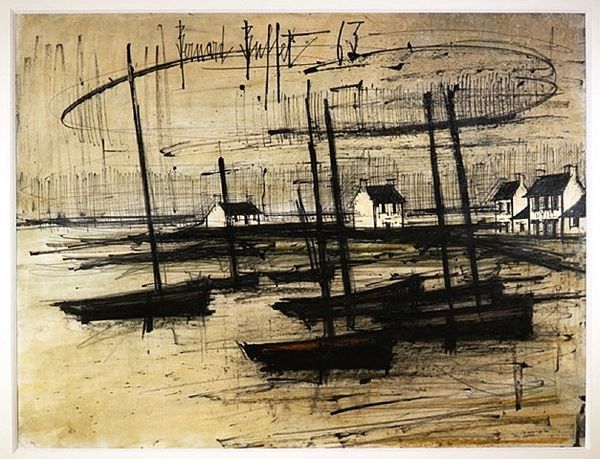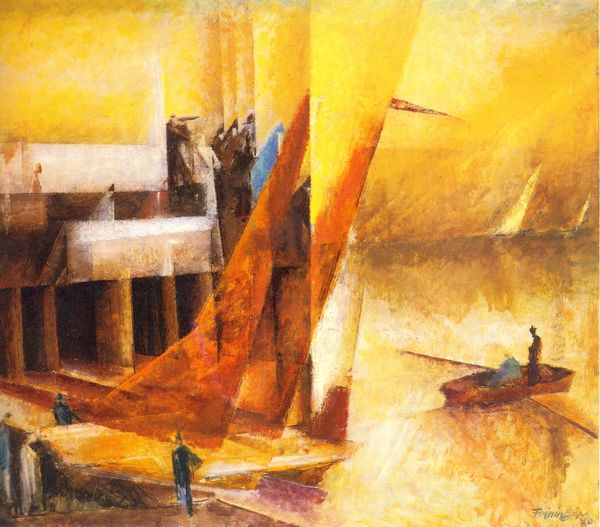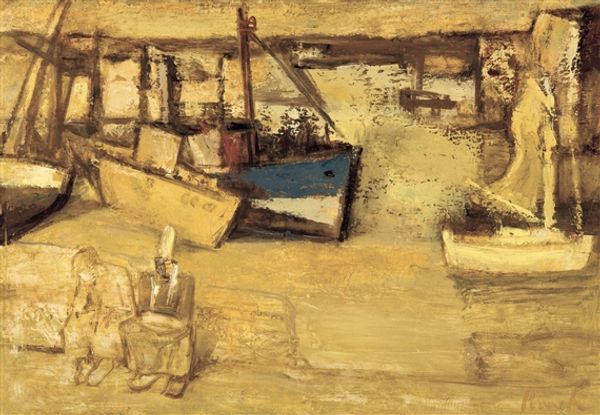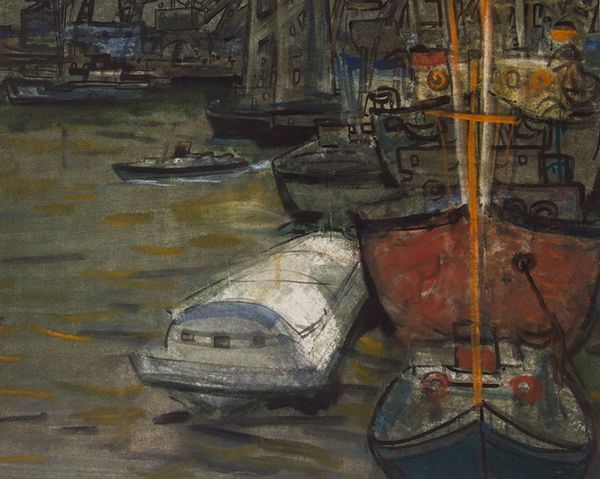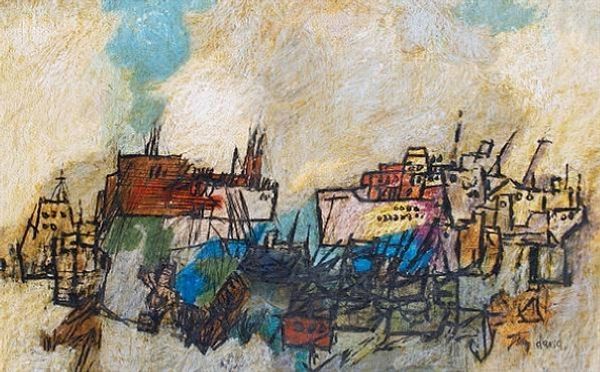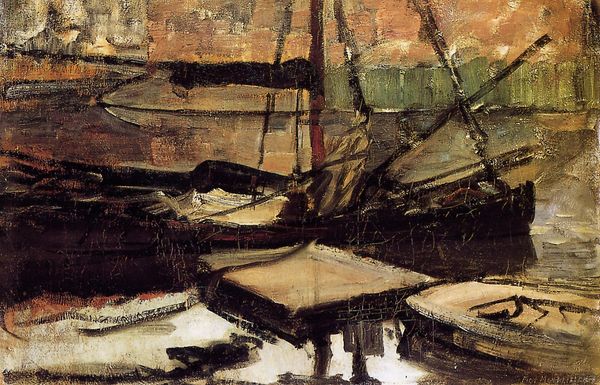
Dimensions: overall: 73 x 90.4 cm (28 3/4 x 35 9/16 in.) framed: 94 x 111.7 x 10.1 cm (37 x 44 x 4 in.)
Copyright: National Gallery of Art: CC0 1.0
Editor: We’re looking at "The Old Port of Marseille," painted by Maurice de Vlaminck in 1913. It's an oil painting, and the choppy brushstrokes really give it this unsettled, almost ominous feeling. The colours, especially that stark blue against the browns and yellows, feel really emotionally charged to me. What do you see in this piece, especially thinking about the period when it was made? Curator: What strikes me is how Vlaminck is engaging with the legacy of port scenes in art history, but with a distinctly modern, almost rebellious approach. The Old Port of Marseille had been depicted countless times, often in a picturesque, almost postcard-like fashion. But Vlaminck's Fauvist brushwork and intense colours disrupt that tradition. Consider the context: 1913. Europe is on the brink of World War I, and artistic movements like Fauvism and Expressionism are reflecting a growing sense of unease and anxiety about the future. Do you think the painting captures some of this sentiment? Editor: Absolutely! The tension in the brushstrokes feels like a visual representation of that unease. And knowing that Marseille was a major port, a gateway to the world, maybe he's also hinting at the fragility of those connections and the impending disruptions to come. It's interesting how he uses what seems like a familiar subject – a port scene – to communicate something much deeper. Curator: Precisely. The seemingly chaotic brushwork, what might appear initially as a purely aesthetic choice, becomes, in my view, a potent historical and social statement. It reflects the breaking down of old orders and the emergence of new realities. This isn't just a pretty picture; it's a reflection of a society on edge. What do you take away from this in thinking about the role of artists and their social commentary? Editor: It makes me think about how art isn’t created in a vacuum; artists are always responding to their environment, whether consciously or not. Vlaminck used an established genre to subtly comment on the instability of the time. Now, when I look at it, I also see the social tension reflected in it!
Comments
No comments
Be the first to comment and join the conversation on the ultimate creative platform.
